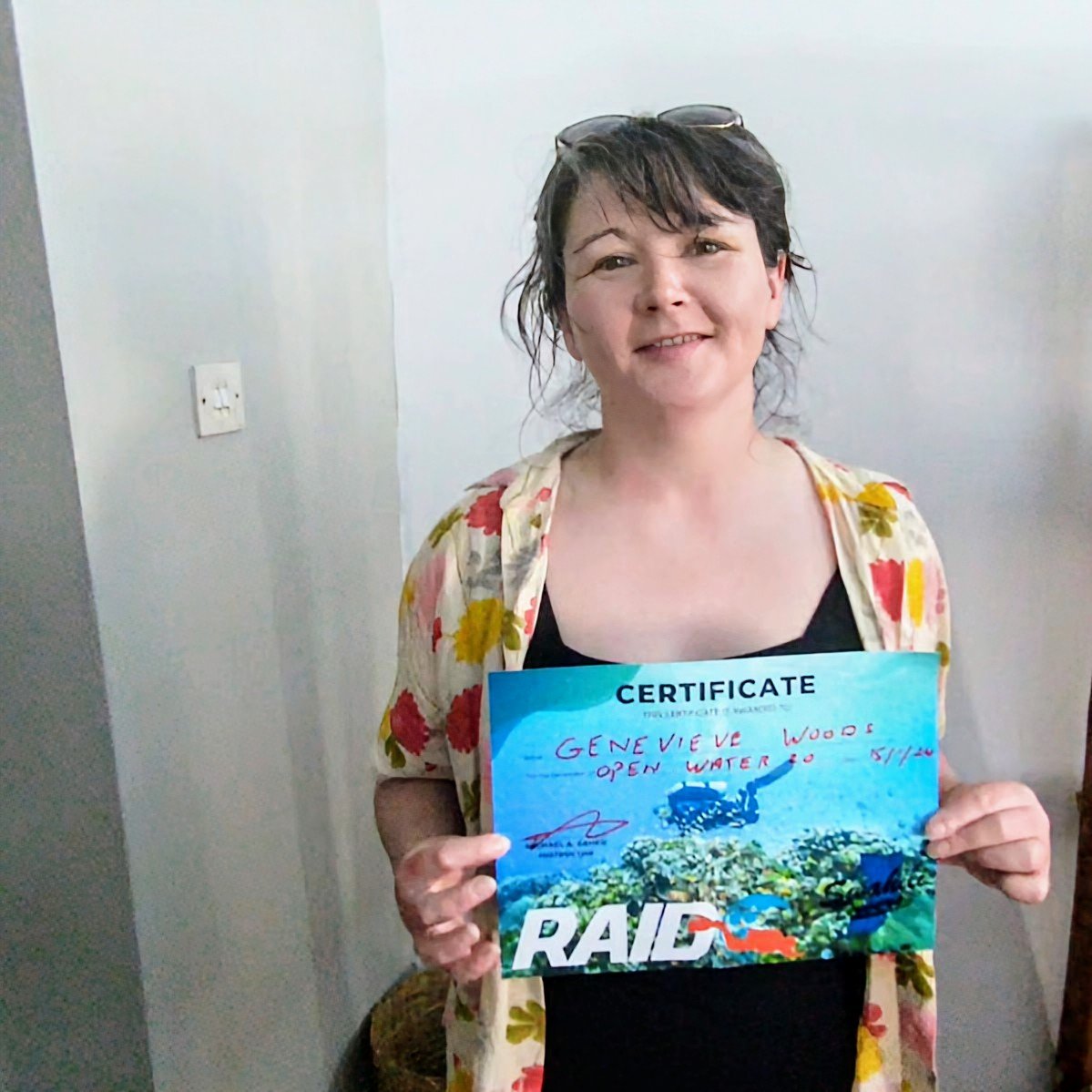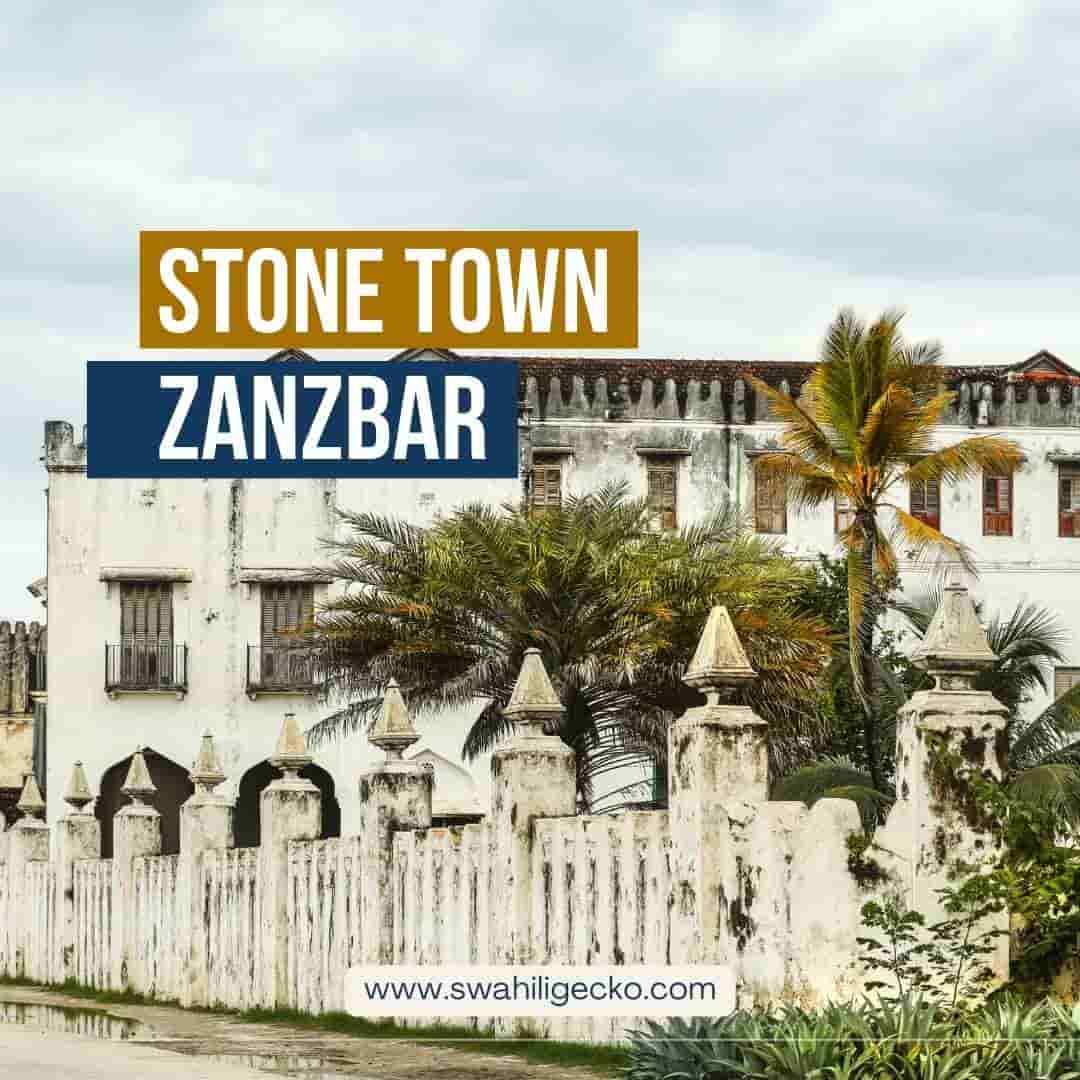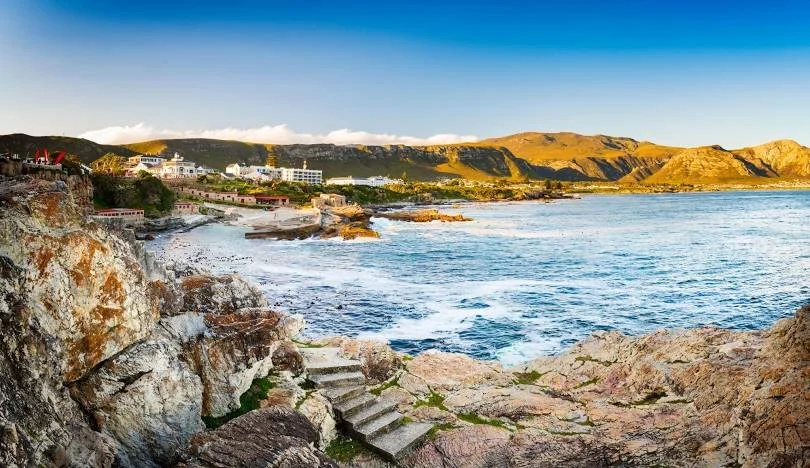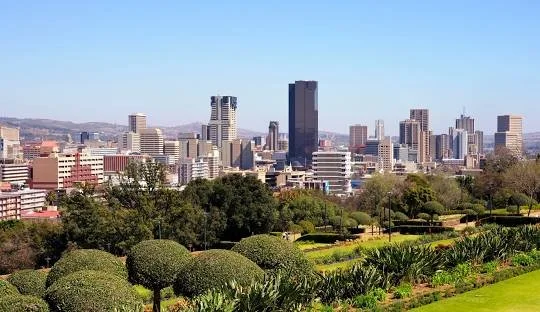The 15 Most Beautiful Cities in Africa in 2024
What is the most beautiful city in Africa?
If you ask Gemini Advanced (Google’s AI model) for an image of the most beautiful city in Africa, you get a picture like this:
That’s messed up! This is how the world sees Africa. This post will hopefully, contribute to changing that Narrative.
My Tanzanian bias says Zanzibar is the most beautiful city in Africa! The East African archipelago of more than a dozen islands (where I’m honored to serve some of the world’s best scuba divers).
But… although Zanzibar is one of the most incredibly designed cities in Africa (and in the world), beauty is subjective, and it is hard to name ONE city as the most beautiful on the continent.
We’ve handpicked the 15 most beautiful cities in Africa in 2024, based on their current quality of architecture & infrastructure, quality of life, natural and scenic beauty, luxury, transport, and safety.
This list of Africa's 15 most beautiful cities is developed from traveling across the continent for decades, reading magazines, scouting the Internet for reviews, and listening to Africa’s top travel influencers.
For you, here are Africa’s heavenly cities…
1. Cape Town: Nature, History & Hot Dogs!
Hit social media, and everyone who’s been to Cape Town testifies that it’s the best place to visit in Africa.
The South African city of Nelson Mandela takes the top spot on our list of the most beautiful cities in Africa in 2024.
Cape Town offers an irresistibly stunning contrast between nature’s impactful beauty and bustling, modern city life.
Speaking of nature, Table Mountain, a flat-topped behemoth, dominates the landscape.
What makes Cape Town beautiful is its variety! Dramatic natural beauty, historical significance, lively neighborhoods, and a world-class botanical garden.
History buffs won't be disappointed. Robben Island, the prison where Nelson Mandela spent many years, offers a sombering look at South Africa's past. A visit here is a powerful reminder of the fight for freedom.
But Cape Town isn't all serious. The Bo-Kaap neighborhood explodes with color. Rows of houses painted in every shade imaginable, lining narrow streets. It's a feast for the eyes!
What to do in Cape Town
Hike or take the cable car to the top for panoramic views that stretch across the Atlantic Ocean and the city sprawled below.
And for nature lovers, the iconic Kirstenbosch National Botanical Garden boasts a mind-blowing collection of South African plants you won't find anywhere else.
Plus, don't forget the hot dogs – seriously, these aren't your average hot dogs. They're filled with curried sausage and dusted with a delicious spice called "boerewors roll." Trust me, you gotta try one!
Daily Life in Cape Town
Getting around Cape Town is easy. The MyCiTi bus system is a convenient and affordable option. Uber and taxis are readily available, and exploring the city center on foot allows you to appreciate the colonial architecture with its grand buildings and cobbled streets.
Modern shopping malls like the V&A Waterfront offer a variety of stores and restaurants.
Safety is a concern in some areas, so it's wise to be aware of your surroundings, especially at night.
2. Marrakech: A Feast for the Senses
Marrakech is a sensory overload in the best way possible! This ancient Moroccan city is a maze of tiny alleyways, bustling squares, and lively souks (open-air markets) overflowing with treasures.
Getting lost is half the fun! You'll wander past beautiful buildings with intriguing tilework and colorful doorways. Don't forget to practice your bargaining skills with the shopkeepers – it's all part of the experience!
History comes alive at the Bahia Palace, a stunning example of Islamic architecture with sprawling courtyards and ornate decorations.
Marvel at the beautiful tilework and calligraphy adorning buildings like the Koutoubia Mosque, a towering landmark with a minaret visible from most parts of the city.
Life in Marrakesh
The air is filled with the aroma of spices and delicious Moroccan food sizzling on grills.
In the evenings, Djemaa el-Fnaa Square comes alive with a kaleidoscope of sights, sounds, and smells. Snake charmers weave their magic, acrobats defy gravity, and storytellers captivate the crowds.
The main mode of transportation in the Medina (old city) is walking, though taxis are readily available for longer distances. The infrastructure can be a bit chaotic, with narrow streets and unpredictable traffic.
Accommodation options range from traditional riads (courtyard houses) to modern hotels, catering to different budgets.
3. Stone Town & Zanzibar
Zanzibar gets a lot of love online, and for good reason! It’s top among the must-visit places in East Africa.
Here's what makes Zanzibar so captivating:
Gorgeous beaches: Zanzibar has some of the best beaches in Africa, perfect for swimming, sunbathing, or just chilling out. Soft sand, clear blue water, and palm trees swaying in the breeze.
Stone Town Zanzibar, a UNESCO World Heritage Site, is a captivating blend of Arabic, African, European, and Indian influences.
The city is special for its long, narrow, winding streets lined with ancient coral stone buildings, carved wooden doors, and balconies, 100s of years old.
Island of spices: Zanzibar has a long history as a spice trading center. The air smells amazing, and you can explore the bustling markets, visit spice farms, and even try out amazing Zanzibari food.
The Sultan's Palace, a historical landmark with a long and fascinating past, is a must-see for history buffs.
What to do in Zanzibar?
What our secrets to enjoy the perfect holidays in Zanzibar? Check these out…
Get lost in the maze-like market — you'll find colorful fabrics, hand-crafted souvenirs, and friendly vendors eager to show off their wares.
Great diving and snorkeling: Zanzibar is a popular spot for divers and snorkelers because of its beautiful coral reefs. You can see all sorts of colorful fish, turtles, and even dolphins underwater.
Many exclusive resorts offer water sports activities like snorkeling and diving, allowing you to explore the lively coral reefs offshore.
Beach time! Of course, no vacation in Zanzibar is complete without some beach time. The beaches here are picture-perfect.
Join over 1.7 million people who visit Zanzibar for a thrill of a lifetime, every year.
4. Luanda, Angola: A City With A Twist
Luanda, Angola's capital city, is a dynamic metropolis undergoing a rapid transformation. Skyscrapers are beginning to rise along the scenic coastline, offering breathtaking views of the Atlantic Ocean.
Luanda's not your typical beach town. It's a stunningly beautiful city with a modern vibe.
Skyscrapers line the coast, there's always something happening, and the energy is electric. Imagine New York City with a beach bum attitude!
Stretches of sandy beaches like Ilha de Luanda beckon sunbathers and surfers, while the iconic Morro da Cruz, a historic fort perched on a rocky outcrop, provides a glimpse into Luanda's colonial past.
Tourist Life in Luanda
In the evenings, Luanda comes alive with the pulsating rhythms of kizomba, a sultry Angolan dance music genre.
Remarkable, is the Museu Nacional de Antropologia (National Museum of Anthropology), showcasing Angola's diverse cultures and traditions. Explore the city center, where Portuguese colonial architecture mingles with modern office buildings.
The art was mind-blowing – super creative and unlike anything I'd seen before.
Catch a live performance at a local bar or nightclub and immerse yourself in the city's vibrant music scene.
Getting around Luanda is easiest with taxis, readily available, and relatively affordable.
Accommodation options range from luxurious beachfront resorts to comfortable city-center hotels.
5. Addis Ababa, Ethiopia: History & Rooftops at High Altitude
Addis Ababa, or "Addis" as the locals call it, is one of those cities that gets under your skin. It’s often regarded as Africa’s Capital city.
Image Credit: skyscrappercenter.com
The city is perched at over 2,300 meters above sea level, making it the highest capital city in Africa.
It is a highly developed city, with a reputation for being the political capital of Africa, given its diplomatic influence and importance for the continent.
It is one of the rare African cities with serious skyscrapers all over the place.
History unfolds at the National Museum, home to the famous Lucy skeleton, one of the oldest hominid fossils ever discovered.
What to do in Addis?
One of the things I loved most about Addis was the coffee ceremony. It's a big deal here, a whole social ritual. People roast coffee beans over charcoal, then brew it in this special pot.
The coffee itself is strong and aromatic, but it's the whole experience that's really special.
A visit to Addis Ababa wouldn't be complete without experiencing a traditional Ethiopian coffee ceremony.
Learn about Ethiopia's rich heritage at the Ethnological Museum, showcasing traditional clothing, weaponry, and artifacts.
Head to Bole Road. It's lined with cafes, shops, and cinemas, perfect for people-watching and grabbing a bite to eat.
And in the evenings, don't miss the rooftop scene. There are tons of restaurants with rooftop seating, so you can enjoy delicious food and amazing views of the city all at once.
The Quality of Life in Addis
Getting around Addis Ababa is easiest with taxis, though minibus taxis ("shared taxis") are a more budget-friendly option. The city's light rail system offers a convenient way to explore some areas.
6. Swakopmund, Namibia
Swakopmund is a charming coast town with an otherworldly beauty thanks to its location where the vast Namib Desert meets the Atlantic Ocean.
The city offers the world a unique blend of German colonial architecture and breathtaking natural beauty.
Did you know that Namibia is one of the emptiest countries in the world? The country has an estimated population of only 2.5 million people, for such a vast piece of land. But their cities are a marvel to watch.
What’s special about Swakopmund in Namibia?
With minimal light pollution and clear skies, the Namib Desert is a dream destination for stargazers. On a clear night, you can see the Milky Way galaxy in all its glory.
German colonial architecture lends the city a unique charm, while its proximity to the Skeleton Coast offers unparalleled natural beauty.
The main street is lined with colorful buildings that look like they were shipped straight from Europe. There are also tons of little shops selling souvenirs and local crafts – I found the perfect handmade desert hat to keep the sun off my head!
History lovers will appreciate the Swakopmund Museum, showcasing the town's fascinating past.
Getting around Swakopmund is easiest on foot or by bicycle, as the town is quite compact. Taxis are available for longer distances.
Safety? Visitors, especially female tourists are very safe, which makes it quite a great place for solo female travel.
7. Hermanus: Whale Watching Wonderland with a Hint of Luxury
Hermanus isn't your average South African beach town. Sure, it's got a beautiful coastline with soft sand and crashing waves, but the real stars of the show here are the whales.
From June to December, southern right whales migrate to these waters to calve and play, making Hermanus one of the best land-based whale-watching spots in the world.
You can even spot whales from the cliffside cafes lining the main street!
Life in Hermanus
Speaking of the main street, it's a charming mix of old and new. Historic Victorian buildings house trendy art galleries and upscale boutiques, while sidewalk cafes offer prime whale-watching real estate.
If you're looking to splurge, Hermanus has a few luxury hotels right on the beachfront, with infinity pools overlooking the ocean. But there are also plenty of guesthouses and B&Bs for those on a tighter budget.
While Hermanus caters to tourists, it also has a growing business scene. Several tech startups have set up shop here, attracted by the beautiful location and good quality of life
Getting around in Hermanus
Hermanus is a small town, easily walkable with a relaxed atmosphere. For longer distances, taxis are readily available. The town boasts a modern hospital and a good selection of pharmacies.
Safety is generally good, but as with anywhere, it's wise to be aware of your surroundings, especially at night.
8. Essaouira: Morocco's Chilled-Out Coastal Escape
Essaouira is a breath of fresh air compared to the bustling energy of Marrakech. This laid-back Moroccan town sits on the Atlantic coast, with strong winds making it a haven for windsurfers and kitesurfers.
Essaouira's history is fascinating. It was once a major port city, and Portuguese influence is evident in the architecture of some of the buildings.
What’s special about the Essaouira?
The medina (old town) is a UNESCO World Heritage Site, a maze of narrow streets lined with whitewashed houses with blue-painted accents. Getting lost here is also a lot of fun, though you should be prepared for the occasional moped zooming by!
The Skala Fortress, perched on the harbor cliffs, offers stunning ocean views and a glimpse into the town's past.
Bargaining is a must in the lively souks (markets), where you'll find everything from hand-woven rugs to fragrant spices.
Getting Around…
Essaouira is a pedestrian-friendly town, with the occasional donkey cart adding to the local charm. Taxis are available for trips to nearby beaches or venturing out to explore the surrounding countryside.
Accommodation ranges from traditional riads (courtyard houses) to modern hotels offering stunning ocean views. The pace of life here is slow and relaxed, perfect for those seeking a chilled-out vacation.
9. Kigali: Rwanda's Rising Star with a Haunting Past
Kigali, Rwanda's capital city, is a city on the move. Just a few decades ago, the country was ravaged by genocide.
Today, Kigali is a symbol of hope and reconciliation. The Kigali Genocide Memorial is a powerful and moving experience, a must-visit for anyone wanting to understand the country's past.
Despite its dark history, Kigali is a fun, lively city with a youthful energy. Modern office buildings and shopping malls line wide boulevards, while bustling neighborhoods offer a glimpse into everyday Rwandan life.
The city is surprisingly clean and safe, with a growing reputation as a tech hub.
What to do here?
In the evenings, head to the Kimihurura neighborhood, where trendy bars and restaurants come alive with locals and expats. This is probably the most fun thing to do here if you’re into the nightlife.
Nyamata Park is a peaceful spot for a walk or picnic, while Kigali Genocide Memorial offers guided walks through the surrounding forest.
The streets of Kigali
Getting around Kigali is easy with ride-hailing apps like Uber becoming increasingly popular. There's also a growing network of public buses.
If you're looking for a city with a fascinating history, a hopeful future, and a rapidly developing infrastructure, Kigali is a destination not to be missed.
10. Lamu: Kenya
Lamu Island, off the coast of Kenya, feels like stepping back in time. It’s one of Africa’s most visited islands in recent years. Cars are banned here, with donkeys and dhows (traditional sailing boats) being the main modes of transport.
How about that!
I totally love that you’re moving around on a donkey like you’re Jesus. Haha.
The historic old town is a UNESCO World Heritage Site, a maze of narrow coral stone streets lined with ancient Swahili houses adorned with intricately carved wooden balconies.
You’ll probably get lost here multiple times as well, but that’s part of the charm.
Why’s Lamu special? It’s History?
Lamu's rich history is evident everywhere you look. The 14th-century Lamu Fort, a UNESCO World Heritage Site itself, offers stunning views of the harbor and a glimpse into the island's past as a trading center.
The Lamu Museum is a treasure trove of Swahili artifacts and historical exhibits. For a unique cultural experience, don't miss a performance of the vibrant "beni" dance, a traditional dance form with drumming and colorful costumes.
Life in Lamu, Kenya
Image credit: UNESCO
While Lamu doesn't have luxury resorts, it boasts a collection of charming guesthouses and boutique hotels, many housed in restored historical buildings.
These places often have rooftop terraces, perfect for enjoying panoramic views of the town and the turquoise waters beyond.
The pace of life here is slow and relaxed, with most evenings spent socializing on rooftops or strolling along the waterfront.
Safety on Lamu Island is generally good, but petty theft can occur, so be mindful of your belongings. The island's infrastructure is basic, with occasional power outages a possibility.
There's a small hospital on Lamu, but for serious medical needs, evacuation to the mainland might be necessary.
What to do in Lamu?
Nature lovers will find plenty to enjoy on Lamu. The beaches here are pristine, with soft white sand and crystal-clear water perfect for swimming and snorkeling.
Boat trips can take you to nearby mangrove forests, a haven for birdlife, or out to the open ocean for deep-sea fishing.
11. Djenné, Mali: A Mud Brick Masterpiece Steeped in Tradition
Djenné, nestled on the floodplains of the Bani River in Mali, is a sight to behold. The entire old town is constructed from sun-baked mud bricks, giving it a unique reddish-brown hue.
What makes Djenné Special?
The crown jewel is the Great Mosque, the largest mud-brick mosque in the world.
This architectural marvel towers over the town, its towering pyramidal structure a testament to Djenné's rich history as a center of Islamic learning.
Be sure to climb the minaret for breathtaking views of the sprawling landscape.
Life in Djenne
The narrow streets of Djenné are a pedestrian's paradise, lined with traditional mud brick houses with intricately carved wooden doors.
The evenings come alive with the sounds of drumming and singing, a chance to experience the rich musical traditions of the region.
Djenné may not have pristine beaches or lush rainforests, but its natural beauty lies in its location on the floodplains.
During the rainy season, the Bani River overflows, transforming the surrounding landscape into a vast inland delta.
Boat trips offer a unique perspective of the town and the surrounding countryside, teeming with birdlife. Djenné is a place to slow down, soak up the unique atmosphere, and immerse yourself in a culture unlike any other.
12. Pretoria, South Africa:
Pretoria, South Africa's administrative capital, is a city of contrasts. Wide, jacaranda-lined avenues give way to sprawling government buildings, while historic monuments stand alongside modern skyscrapers.
Nicknamed "Jacaranda City" for the abundance of these purple flowering trees, Pretoria transforms into a breathtaking spectacle every spring when the trees bloom. Be sure to take a stroll through jacaranda-filled streets like Jacaranda Street in Arcadia for an unforgettable experience.
What to do in Pretoria
History freaks will love Pretoria. Church Square, the city's heart, is home to historic buildings like the neo-Renaissance Palace of Justice and the brooding Old Raadsaal, the former seat of the South African parliament.
The Kruger House Museum, the residence of two South African presidents, offers a fascinating glimpse into the country's political past.
Life in Pletora
Pretoria boasts a sophisticated side with a range of luxury hotels, high-end boutiques, and Michelin-starred restaurants.
However, the city also retains its small-town charm with cozy cafes, local craft markets, and vibrant neighborhoods like Melville, known for its alternative scene and live music venues.
Getting around Pretoria is easy with a well-developed public transport network of buses and trains. Uber and taxis are readily available for added convenience.
The city has excellent healthcare facilities, with several world-class hospitals and specialist clinics.
Nature lovers will not be disappointed. The National Zoological Gardens of South Africa houses a wide variety of animals, while the Pretoria National Botanical Garden boasts an impressive collection of indigenous flora.
Hiking trails in the surrounding hills offer stunning views of the city and a chance to escape the urban bustle.
13. Stellenbosch, South Africa
Starting to feel like South Africa is all over the place? Well, it’s the most socially developed country on the continent, so no surprises.
Stellenbosch, just in the heart of South Africa's Western Cape Winelands, founded in 1679, is the oldest town in South Africa.
Its rich heritage is evident in the well-preserved Cape Dutch architecture lining the streets.
What is Stellenbosch most known for?
The real star of the show here, however, is the wine. Stellenbosch boasts over 200 wineries, from historic estates to trendy boutique producers.
Spend your days cycling through vineyards, sipping on award-winning wines, and learning about the winemaking process.
For a unique experience, don't miss a sunset picnic
Wander down Dorp Street, the main artery, and admire the gabled houses with their distinctive whitewashed walls and thatched roofs.
Life in Stellenbosch
Luxury isn't in short supply here. Several Stellenbosch hotels have earned international acclaim for their exceptional service and opulent accommodations.
Stellenbosch is a pedestrian-friendly town, with most wineries within easy walking or cycling distance.
Tuk-tuks and taxis are available for longer distances or for those wanting to explore further afield.
14. Luxor, Egypt
Luxor, Egypt, is an open-air museum of ancient Egyptian civilization. Located on the banks of the Nile River, Luxor was once the pharaoh's capital and its legacy is evident everywhere you look.
Towering temples like Karnak, with its hypostyle hall supported by a forest of giant columns, and Luxor Temple, with its imposing statues of Ramses II, leave you awestruck by the sheer scale and ingenuity of the ancient Egyptians.
What to do in Luxor
A trip to Luxor isn't complete without exploring the Valley of the Kings, a vast necropolis where pharaohs were buried in elaborately decorated tombs.
The chance to walk in the footsteps of pharaohs and explore the magnificent temples and tombs is an experience that will stay with you long after you leave.
Luxury travelers are well catered to in Luxor. Several five-star hotels offer stunning views of the Nile River and impeccable service.
The evenings come alive with traditional Egyptian music and belly dancing performances, allowing you to experience the rich cultural heritage of the region.
Getting around Luxor is easy with taxis readily available. Never forget your mini fans for North African travel.
For a more scenic option, take a felucca (traditional sailboat) ride down the Nile, a relaxing way to soak up the scenery.
15. Chefchaouen: Morocco's Mystical Mountain Town
Chefchaouen, sitting in the Rif Mountains of Morocco, is an entire old town; a labyrinth of narrow cobbled streets and alleyways, all washed in various shades of blue.
This unique color scheme, ranging from indigo to powder blue, gives the town a mystical aura and has earned it the nickname "The Blue Pearl."
What Makes ChefChaouen Special?
The town's history is fascinating. Founded in the 15th century by Jewish refugees fleeing Spain, Chefchaouen's blue tradition is believed to symbolize peace and tranquility.
Spanish influence is also evident in the architecture, with many buildings featuring wrought-iron balconies and red-tiled roofs adding a touch of contrast to the blue backdrop.
The Kasbah, a 17th-century fortress perched on a hilltop, offers stunning panoramic views of the town and the surrounding Rif Mountains.
Life in ChefChaouen
Day trips can take you to the nearby Akchour River with its cascading waterfalls, a perfect spot for a refreshing dip on a hot day.
Hiking trails in the surrounding mountains offer breathtaking views and a chance to escape the hustle and bustle of the medina.
The evenings come alive with the sounds of traditional Moroccan music and the aroma of spices wafting from rooftop restaurants.
Getting around Chefchaouen is easiest on foot, as the car-free medina is best explored by wandering and getting lost (in a good way).
Petit taxis are available for longer distances or trips to nearby villages nestled in the mountains.
Traveling to Africa can be super easy and hassle-free, with the right action steps. Plan your trip to Africa with these 7 simple steps.
Final Thoughts
If you’re developing a genuine interest in traveling the world while keeping it safe for future generations, check out these destinations that are to us the perfect examples of ecotourism practices around the world.
And if you’re into scuba diving and are looking for newer locations to explore more amazing marine life, we invite you to come dive in Zanzibar and Pemba Island, with Swahili Divers (East Africa’s oldest and safest dive agency for decades).
Learn more about diving in Pemba Island.

"I came to Pemba to see the coral. It was beautiful, in good condition, and full of fish and nudibranchs. The diving staff of Swahili divers are all excellent. Equipment was all included and was spot-on. My partner completed her Open Water certification in a few days and we were both totally satisfied."
Evo S.

"We enjoyed some wonderful dives with Swahili Divers during our holidays in Pemba this July/August. Mike and the team are very professional, and always ready to support and find solutions. The dive sites are very diverse and can be used for junior open water divers up to very experienced ones. That means shallow water to super nice wall dives. Thanks for the wonderful time with you!! "
Regards, Nicole & Patrick and the 3 kids;-)



















